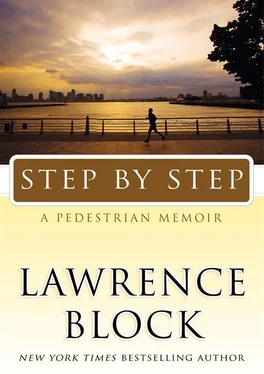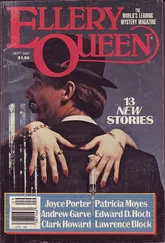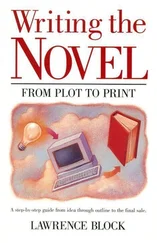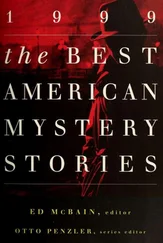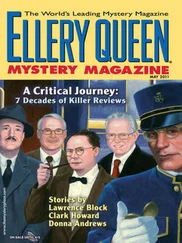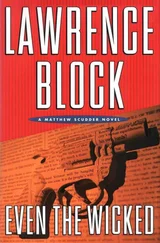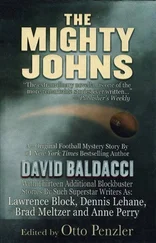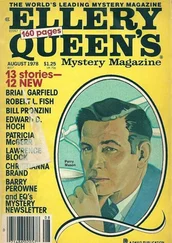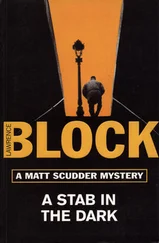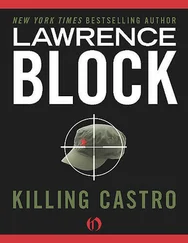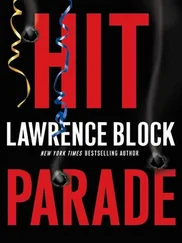Lawrence Block - Step by Step
Здесь есть возможность читать онлайн «Lawrence Block - Step by Step» весь текст электронной книги совершенно бесплатно (целиком полную версию без сокращений). В некоторых случаях можно слушать аудио, скачать через торрент в формате fb2 и присутствует краткое содержание. Год выпуска: 2009, ISBN: 2009, Издательство: William Morrow, Жанр: Биографии и Мемуары, Юмористические книги, на английском языке. Описание произведения, (предисловие) а так же отзывы посетителей доступны на портале библиотеки ЛибКат.
- Название:Step by Step
- Автор:
- Издательство:William Morrow
- Жанр:
- Год:2009
- ISBN:978-0-06-172181-6
- Рейтинг книги:3 / 5. Голосов: 1
-
Избранное:Добавить в избранное
- Отзывы:
-
Ваша оценка:
- 60
- 1
- 2
- 3
- 4
- 5
Step by Step: краткое содержание, описание и аннотация
Предлагаем к чтению аннотацию, описание, краткое содержание или предисловие (зависит от того, что написал сам автор книги «Step by Step»). Если вы не нашли необходимую информацию о книге — напишите в комментариях, мы постараемся отыскать её.
bestselling author comes a touching, insightful, and humorous memoir of an unlikely racewalker and world traveler.
Step by Step — читать онлайн бесплатно полную книгу (весь текст) целиком
Ниже представлен текст книги, разбитый по страницам. Система сохранения места последней прочитанной страницы, позволяет с удобством читать онлайн бесплатно книгу «Step by Step», без необходимости каждый раз заново искать на чём Вы остановились. Поставьте закладку, и сможете в любой момент перейти на страницу, на которой закончили чтение.
Интервал:
Закладка:
I thought I’d jotted down all of my training hours for that stretch on my calendar, but the calendar shows no entries before April 29. That week I walked fifteen hours, with the longest day Wednesday, May 2, when I put in four hours. The following week I logged twenty hours, or eighty miles, including a pair of four-hour days and one walk of five hours.
I was out there only three times the following week, but my long day extended to six hours, and the week’s approximate mileage came to forty-eight. Then I had a seventeen-hour week, with a long day of seven hours. I was focused on time, not distance, but estimated that I was averaging fifteen-minute miles; I trained without paying attention to speed, just going at whatever my cruising pace happened to be, and I know I was going faster in the second hour than the first, even as I’m willing to believe hour seven was slower than hour six. But no matter how conservatively I wanted to calculate, seven hours walking had to be the equivalent of a marathon.
It wasn’t a terribly interesting marathon, consisting as it did of endless repeat loops on the Hudson piers, and walking down around the foot of Manhattan and up along the other side of the island and back again, with another assault of the piers. I walked it on Sunday, May 20, two weeks before the big race, and I took the next day off, and walked an hour the following day and five hours the day after that, and took another day off, and walked four hours before taking another day off.
And then, the last week before the race, I walked three hours on Sunday and three more on Tuesday. And that was that. Now all I had to do was fly to Minneapolis on Friday and walk all day and all night.
I’d had only two short races so far in 2007, both of them in January, one a week before the Mississippi Marathon, the other a week after. The first was the Fred Lebow five-miler, which I was walking for the third year in succession. I walked through a lot of pain — it took me the first four miles to warm up — and my time, while a little better than 2005, was noticeably slower than 2006. The second race, also in Central Park, was the Manhattan half-marathon, and I really suffered during the three hours I spent walking it. I probably started out too rapidly, a fault I found it difficult to avoid in races shorter than marathon length, and it took me forever to warm up, and I never really got into a comfortable rhythm. I’d done the same race on the same course the previous year, with a net time of 2:36 and change, and now it was just one year later and my time was 3:03:40.
I walked off the course profoundly disappointed. My pace had slowed from 11:38 to a sluggish 14 minutes per mile, yet it wasn’t as though I’d been taking it easy and coasting. On the contrary, I’d been pressing all the way, trying to get to the finish line as quickly as possible, and well aware that those of us who took more than three hours might not get our times recorded. I’d expended a great deal of effort, and all I had to show for it was a bad performance — and another ugly long-sleeved white T-shirt.
It seemed to me that I could expect more of the same in any future short races. While I might have a better time of it if I managed to warm up more effectively and start slower, I didn’t stand much chance of improving my times, or even maintaining them. Because I was having to face up to the inexorable nature of the aging process, and the surprising realization that the universe wasn’t going to make an exception in my case.
No matter how diligently I trained, no matter how hard I pushed myself, the years were going to slow me down. This had been hard to see at first, because when I’d returned to racewalking three years earlier I had improved from one race to the next, as I got into shape, polished my technique, and learned pacing and race strategy.
And, of course, I had denial working for me. I’d reacted with surprise when it took me fourteen minutes longer to walk the Brooklyn Half Marathon than it had in 1981, and wound up telling myself I ought to be within reach of that earlier mark in another year or two. Why, all I had to do was shave a minute per mile off my time in 2005. How hard could that be?
But aging did seem to be real, and worse yet it seemed to apply to me. It seemed to me I could feel the two years since I resumed racing, that they’d already begun to take their toll.
Well, so what? The number of minutes and seconds it took me to cover 3.1 or 5 or 6.2 or 10 miles was, in the first place, of no interest whatsoever to anyone else in the world but me. And did I myself really care all that much? I would never be faster than I was now, but when had I ever been other than slow? As long as I got a sense of accomplishment out of my races, a feeling of satisfaction irrespective of the numbers on the clock—
And I did — but only in the long races. The sheer unforgiving distance of a marathon made it a triumph to get to the finish line, however long it took. Every time I finished one, I felt as though I’d done something worth doing. It was easy to feel good after the first Mardi Gras Marathon, when I’d been so pleased with my time, but my second go at New Orleans left me with a good feeling of another sort. I’d taken more than an hour longer to cover the same course, but no matter; I’d gone the distance.
That happened with every marathon. If it was in a state that was new to me, the finish line brought me one step closer to the goal of fifty states. (Plus, I suppose, D.C.) If I already had the state on my list, no matter; it was still one more marathon on my record. The ultras I’d endured might allow me to drop the phrase just a marathon into my conversation, but never without a drop or two of irony.
After my first race in New Orleans, after I’d seen my time drop in three successive marathons from 5:45 to 5:21 to 5:17, it had been easy for me to envision the improvement continuing — not forever, mind you, but for a while. A year later, it was harder to sustain that vision, and seemed rather more likely that 5:17 would be a high-water mark, that I’d never again cover that much ground in that little time.
I could, if I wanted, use one of a variety of formulae designed to measure one’s performance against one’s age; that way I could race not only the clock but the calendar as well, and there were enough different measuring sticks on offer so that I could almost certainly find something that would provide reassurance. This all struck me as a pop science take on I’m in pretty good shape for the shape I’m in, and I decided the hell with it.
And in fact I was in pretty good shape, and more likely to stay that way if I kept on doing marathons. I didn’t know how long I’d be able to keep at it, but I didn’t know how long I’d go on having a pulse, either. As long as I could, I’d go on walking marathons.
And twenty-four-hour races. There would be a point, of course, when I finished with a twenty-four-hour performance equivalent to my 5:17 in New Orleans. So far I’d been in three such events, and I’d done a little better each time. Someday that would no longer be the case.
But for now the twenty-four-hour race still offered room for improvement.
Late Friday afternoon in Minneapolis I drove to the park to pick up my T-shirt and number. At the prerace pasta party, I met some of my fellow walkers. Ollie Nanyes had come up from Peoria, and introduced me to Marshall King, the Texan who’d qualified as a Centurion a year and a half earlier at the Ultracentric. I loaded up on pasta and drove back to my hotel.
The goody bag included a parking pass; it would entitle me to park overnight in one of the lots adjacent to the course. Before I went to bed I put it where I’d be sure to remember it, and of course I forgot all about it. I was able to get a spare pass the next morning from one of the race directors, and left my car in a good spot.
Читать дальшеИнтервал:
Закладка:
Похожие книги на «Step by Step»
Представляем Вашему вниманию похожие книги на «Step by Step» списком для выбора. Мы отобрали схожую по названию и смыслу литературу в надежде предоставить читателям больше вариантов отыскать новые, интересные, ещё непрочитанные произведения.
Обсуждение, отзывы о книге «Step by Step» и просто собственные мнения читателей. Оставьте ваши комментарии, напишите, что Вы думаете о произведении, его смысле или главных героях. Укажите что конкретно понравилось, а что нет, и почему Вы так считаете.
